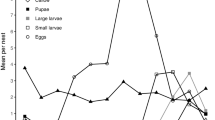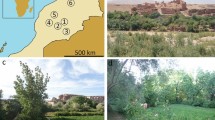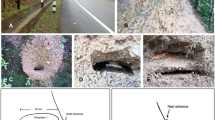Summary
We studied the nesting and social biology of two aggregations of the obligately eusocial halictine bee Lasioglossum malachurum at Agios Nikolaos Monemvasias (ANM) in southern Greece. Observations and nest excavations carried out from May to June 2000, revealed social and demographic variation between aggregations and years at ANM, as well as notable differences between these and other European populations. In southern Greece, the colony cycle includes multiple broods: the first two broods comprise only workers, whereas the third brood comprises workers, males, and gynes. Although pleometrosis is unknown in other populations, in the ANM region, as many as 10% of nests have more than one foundress. Newly emerged workers and gynes exhibit non-overlapping size distributions, but a few queens are worker-sized, indicating that workers occasionally overwinter and become foundresses. Although the vast majority of workers are unmated and most exhibit no ovarian development, an increase in worker ovarian development at the time of male production suggests that many males may develop from worker-laid eggs. Worker reproduction seems to be inhibited by the presence of queens, and annual variation in queen mortality may underlie annual variation in worker ovarian development. Across Europe, the major demographic and social differences among L. malachurum populations are in the number of worker broods and the extent of worker ovarian development. This contrasts with the results of a principal components analysis of social traits among 15 social L. (Evylaeus) populations, which shows that interspecific social variation is defined by the proportion of males in the early brood, the proportion of workers mated, queen-worker size dimorphism, gyne overwintering locale, and the proportion of workers with developed ovaries.
Similar content being viewed by others
Author information
Authors and Affiliations
Corresponding author
Additional information
Received 17 June 2002; revised 16 January 2002; accepted 27 January 2003.
Rights and permissions
About this article
Cite this article
Wyman, L.M., Richards, M.H. Colony social organization of Lasioglossum malachurum Kirby (Hymenoptera, Halictidae) in southern Greece. Insect. soc. 50, 201–211 (2003). https://doi.org/10.1007/s00040-003-0647-7
Published:
Issue Date:
DOI: https://doi.org/10.1007/s00040-003-0647-7




